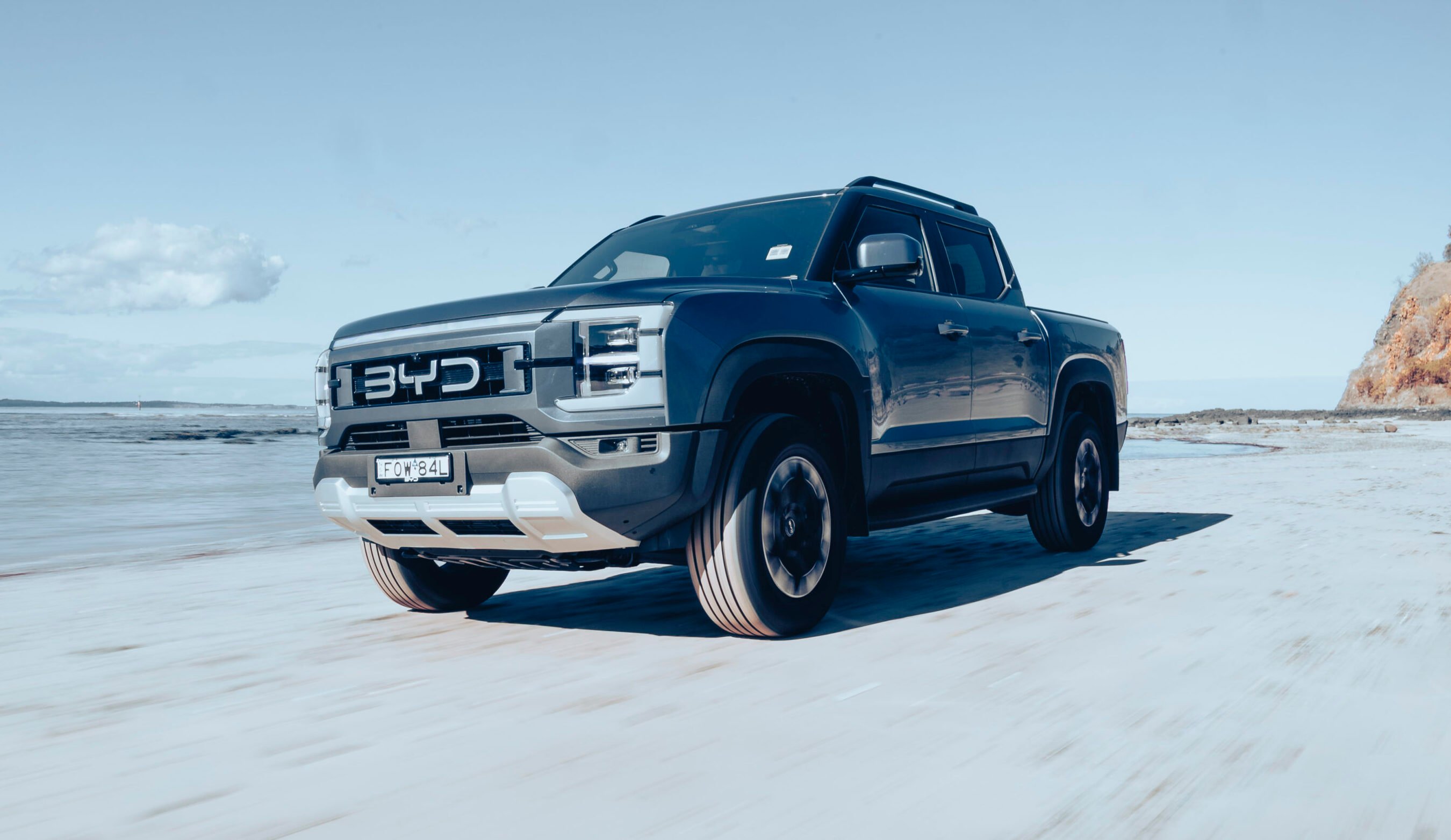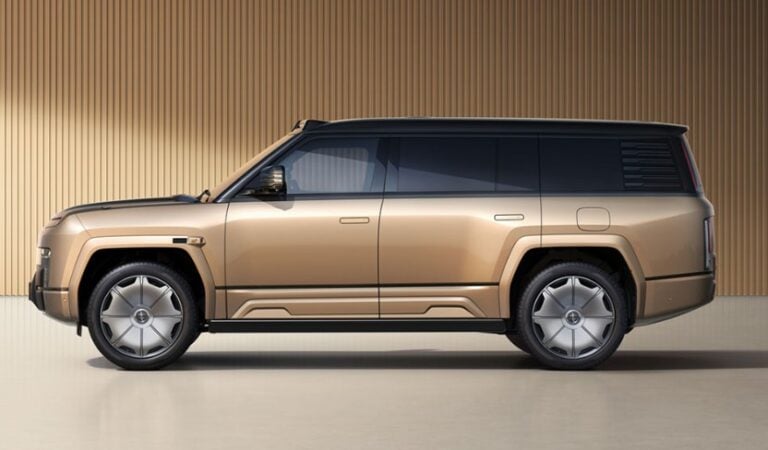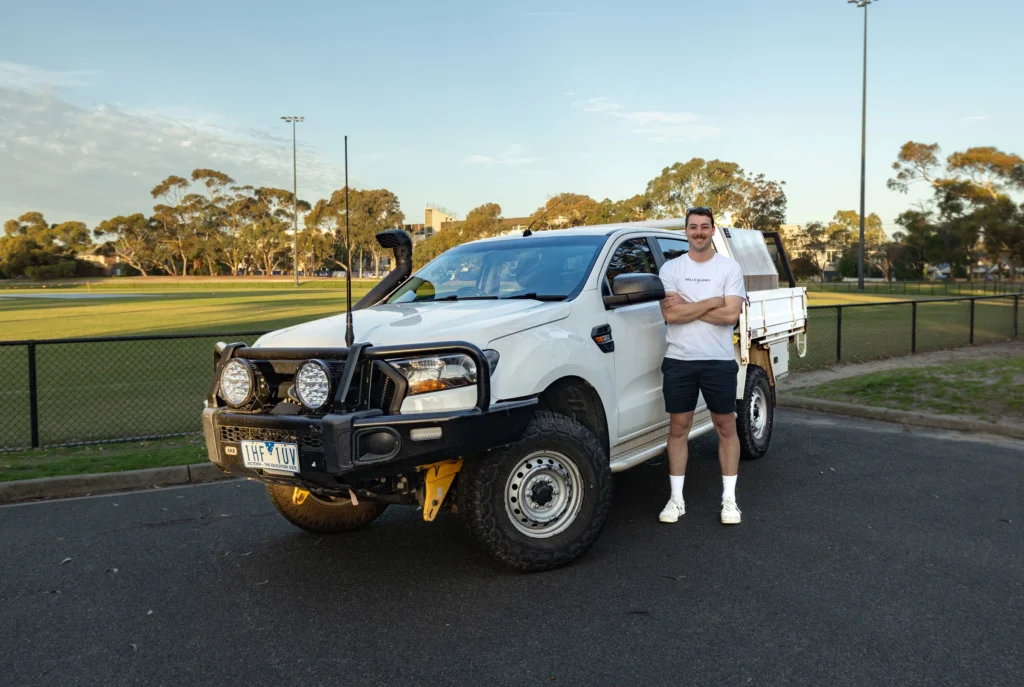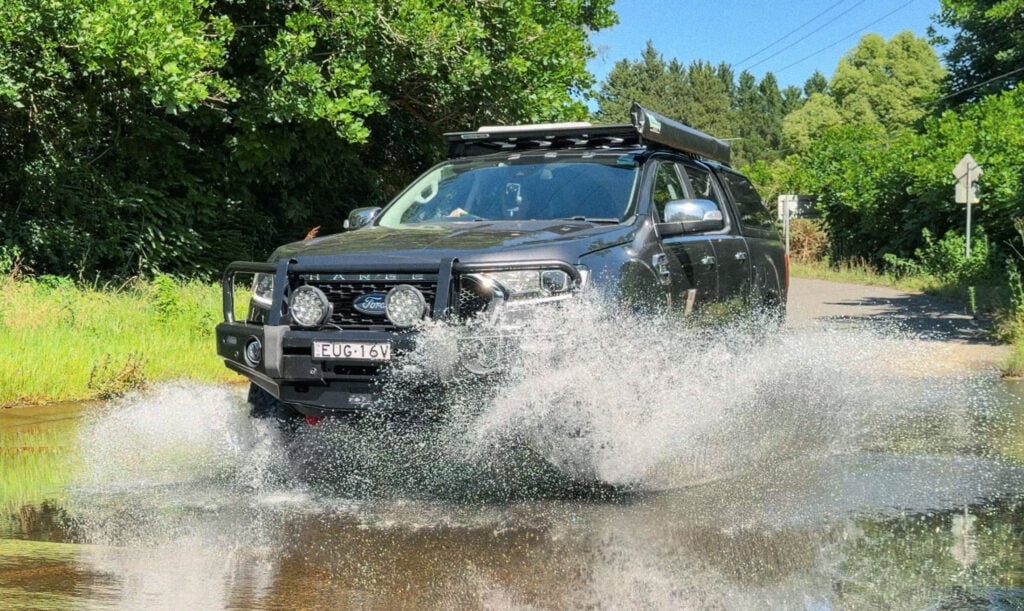Sometimes it’s hard to establish just where a measure of healthy scepticism lapses into hard-bitten cynicism. Nobody wants to be that rube, who falls for the promises of snake oil salesmen and is hook, line and sinkered by the extraordinary claims. Take the BYD Shark 6 ute as a for-instance. It’s normally pretty good policy to ignore a company’s first stab at a new market sector because said company will learn quickly and bring along something a whole lot better in time.
That was certainly my read when I first heard that Chinese manufacturer BYD was about to sell a ute into the Aussie market. After all, there’s nowhere else on Earth that knows more about utes than Australia, that lives and breathes them, and devours every last detail of their existence. Make no mistake, this is a phenomenally well-informed market. The result, I assumed, would be that we would point and laugh, condescendingly write it off as a plucky first stab and get back into our Rangers and Hiluxes.
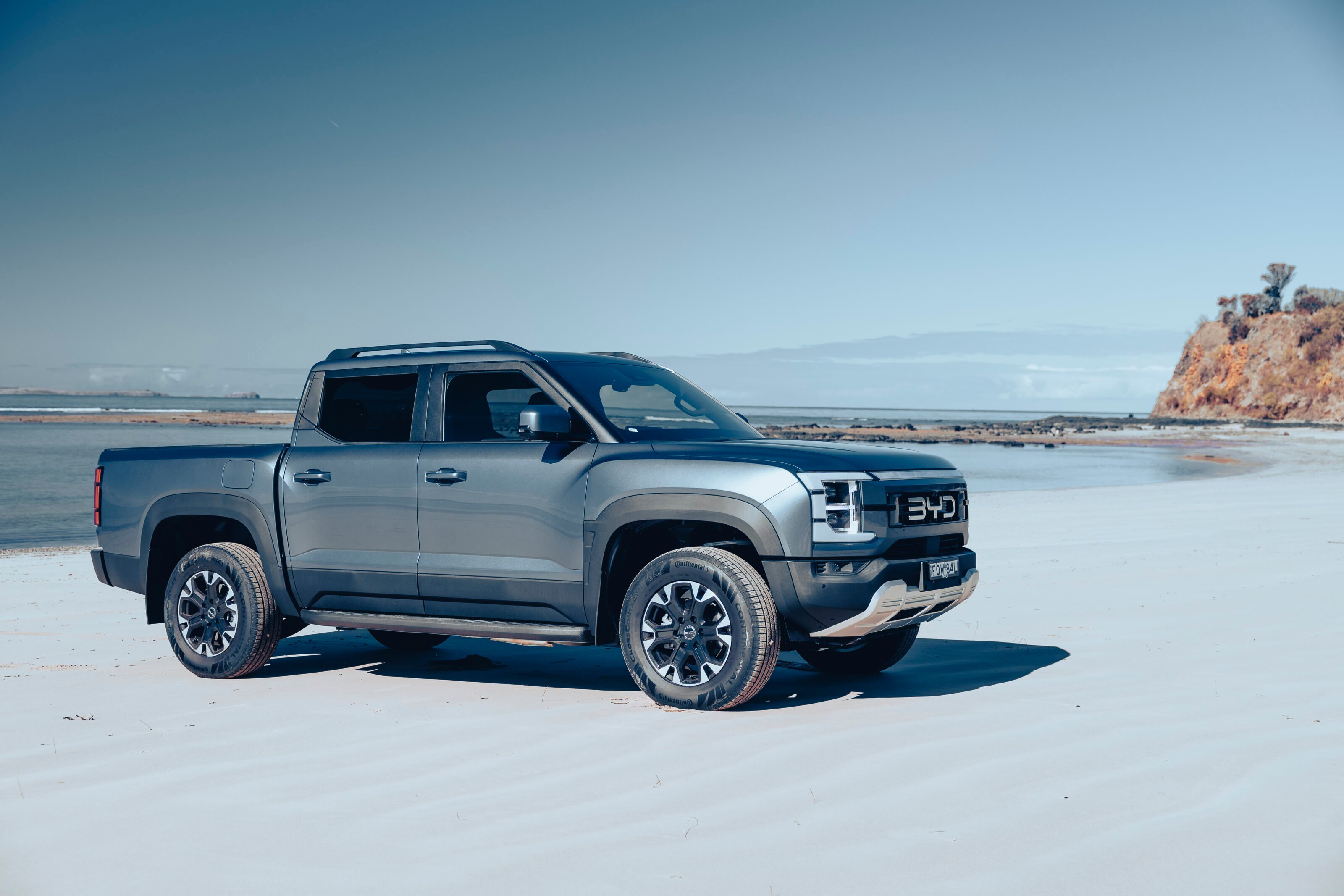
Then rumours of huge pre-orders started circling. The initial sales figures backed the rumours up, admittedly swollen by buyers falling over themselves to place an order for this plug-in hybrid before the government pulled the plug on fringe benefit taxes. In March, the Shark claimed a 14.7 percent share of the 4×4 dual-cab market, seriously eroding the shares of Ford and Toyota and positioning itself in third place, snapping at the heels of the Hilux. Established names like the Mitsubishi Triton, Isuzu D-MAX, Mazda BT-50 and Volkswagen Amarok had all been instantly leapfrogged.
Many didn’t understand quite what it represented. Because it couldn’t tow 3500kg, it was dismissed by the hardcores as a pretend ute. It certainly wouldn’t be your first choice to drag a horse float or to venture into the Simpson Desert. What we wanted to establish today is not how it might appeal to these power users, but how it fulfils a role as a large but light-duty ute for the buyer who will use it for its absolute target use-case: on suburban tarmac or country dirt roads, as a vehicle that offers an active lifestyle option without requiring you to delve right into the weeds of off-roading or heavy towing.

On this route we start at an EV charger in Doveton and we end, appropriately enough, at Shark Bay or, as its better known today, Safety Beach on Victoria’s Mornington Peninsula.
I realise fairly on in the piece that I’m committing some sort of EV crime. I have parked a lowly plug-in hybrid on a 350kW high-speed DC charger. This Evie unit at Doveton is the only high-speed charger in quite a wide radius, and I feel slightly self-conscious with the Shark sitting there accepting a maximum charging rate of 40kW. Only a few weeks earlier, I’d charged a Hyundai Ioniq 5 N at this same charger at 240kW, adding a stack more power to it than the paltry 25.8kWh I’ve pumped into the Shark 6 over 50 minutes to top it to 100 per cent. I know, another public charging station demerit. Nevertheless, I vow to move aside if another user needs to charge an EV.
The reason I want the battery at its peak state of charge is that I’m keen to see how far we go today on battery power alone. The claim is 100km, but we know about manufacturer fuel economy claims. I’d heard some fairly scary stories about the Shark’s lack of overall range, due in no small part to the tiny 1.5-litre engine working itself hard to maintain battery state of charge, in turn rapidly draining the 60-litre fuel tank. This was to be no hypermiling exercise though.

First impressions are promising. The cabin is a far more mature proposition than evident in the designs BYD first offered the Australian market, with quality touch points, considered materials choices and decent ergonomics that belie the $57,900 list price. It’s big too, with plenty of space for one six-footer to sit behind another. Oddments space, charging facilities and all-round visibility all score highly. Moving round to the back, there’s a sizeable 1200-litre tray with a spray-in bedliner, a pair of lights, six tie-downs, a trio of three-pin plugs – ideal for camping trips. Up to 6.6kW is available via the vehicle to load (V2L) function. Payload isn’t standout at just 790kg but, again, it pays to consider the Shark’s role in the larger marketplace.
Our route starts on major arterials: M1, M420 and M780. I’ve yet to pair my phone with the Shark and the native nav is stuck in an endless loop, locating the car in Dandenong trying to get it to exit the M1. We follow signs south to Hastings, on the shores of Western Port, the nav still rinsing and repeating. It’s not a promising start. We switch off and on a few times, but it still can’t seem to camp onto a signal. Only by connecting to Android Auto does the native nav then refresh itself. Weird.
The other thing that’s odd is that the party piece of the Shark’s interior, the 15.6-inch rotating display, will do its thing with a voice command without invoking the BYD assistant. Just saying “rotate screen” will get it to do its 90-degree spin, which suggests the car is listening to everything you say, all the time. Even without donning the tinfoil hat, that’s a bit spooky. It’s also worth noting that if you’re wearing polarised sunnies, the screen goes virtually invisible when rotated into portrait mode. The otherwise excellent head-up display also dims to near illegibility.

People want to talk to you about the Shark. I was buttonholed by a tradie at the charging station who was keen to hear my views and when we stop in Flinders for lunch, an old boy in the general store also wanted to pick my brains as he was looking to replace his old Navara and wanted to know if the Shark was much chop. It seems that there’s still a swathe of interested but undecided potential buyers out there in the market in whom BYD has piqued interest, but have yet to commit. Although the ute comes with a a 6-year/150,000km vehicle warranty and an 8-year/160,000km warranty for the high-voltage battery, the sort of customer who might typically buy a vehicle locally will probably require a bigger dealer network before feeling fully assured.
After a highway section that wasn’t offering a lot of opportunity for the vehicle to add any re-gen to the battery, energy consumption is reassuringly modest. In the end, we register 85km before the state of charge reaches 25 percent and EV mode kicks in. You can hold the EV/BEV button down to force it to continue running in EV mode – the so-called ‘Max EV’ option, illuminated in blue in the binnacle – but otherwise the 1.5-litre engine suddenly chimes in. Had we done so, it would have comfortably exceeded the 100km claim, so that’s a big tick on the positive side of the BYD’s ledger.
Because the dual electric motors have been pressed into action and the engine has been effectively twiddling its thumbs for the last couple of hours, it sounds like a cold start procedure when internal combustion finally chimes in. It’s quite startlingly uncouth for a few minutes before it seems to settle back to a less obnoxious background chunter.
One thing Shark owners will have to become comfortable with is that while the engine does drive the front pair of wheels in some instances, it’s more often used as a generator to charge the battery. In this guise, the engine speed bears no relation to your speed across the ground, and it can sound like it’s straining a bit, desperate for an upshift that there’s no way of making. Nudge up the 12-speaker Dynaudio stereo instead. Another oddity is that the Shark will automatically enter towing mode if a trailer is connected, at which point the cruise control is deactivated, even if you’re nowhere near the 2500kg braked towing limit.

Entrain the motors and the engine with some purpose and the Shark is undeniably rapid. We timed it at 5.6 seconds to 100km/h which is quicker than a figure achieved in a current Ranger Raptor with the same data logger. In short, there’s no ute at a comparable price point that’s anything like as quick off the mark as the Shark. At 2.7 tonnes, it’s no lightweight though, and this, coupled with the bulbous Continental CrossContact RX tyres (265/65 R18 all round) don’t promise much when the road gets twisty.
Boneo Road, which runs out of Flinders towards Cape Schanck, is the perfect place to trip up a clumsy ute. As the road climbs towards the track to Bushrangers Bay, it throws in a few wicked corners, with decidedly odd cambers. There are still pieces of a Lamborghini Gallardo on the hillside below the top hairpin where somebody extravagantly ran out of talent here.
Pitch it into a corner and there’s a slightly numb feeling on turn-in, as it settles on its springs, but outright grip is surprisingly good, the front end proving surprisingly resistant to understeer. The dynamic package is, on the whole well judged. The transition from re-gen to friction braking is slick, the two modes of electrical steering assistance both have something to be said for them and some thought has clearly gone into the control weights.
Ride quality has, however, been a point of contention. In short, the Shark’s primary ride and overall body control is extremely good. Secondary ride is a bit flintier. Pass over a cat’s eye or a patched piece of bitumen and the thud will run right through the Shark’s superstructure. On typically poor Aussie B-roads it can be ab it busy, but then that goes for virtually every other ute on the market. Perhaps it’s the contrast between the driveline serenity and this typically ladder-framed secondary ride that jars with some reviewers. I didn’t find it particularly offensive in the greater context of available dual-cabs.

On dirt, the Shark feels relatively surefooted, up to a point. On mild corrugations, the independent rear suspension does a good job. Up the amplitude of the washboard and things start to get a bit lively. We didn’t have the opportunity on this drive to really start clambering around, but the Shark’s limited wheel articulation and reliance on software rather than a locking diff or a low-range transfer case means that you’ll need to recognise the limits of the hardware. The terrain modes comprise Muddy, Sand, Snow and Mountain and hill descent control is fitted as standard. The three drive modes are Eco, Standard and Sport.
From the dirt roads of Boneo, we head north. It’s a picture-perfect autumnal day on the peninsula, cerulean skies with no wind, the seasonal green starting to creep back into the paddocks after a dry summer. It’s getting warm and the Shark’s air conditioning seems to struggle to get up to speed, although the seat coolers on this Premium model – a lower spec Essential model is due to join it early next year – are a welcome and effective inclusion as these dark pleather seats could probably cremate your unmentionables in the peak of an Aussie summer.
Talking of coolers, this grade features dual wireless mobile phone chargers, and the one on the right is cooled to keep your handset from overheating. That’s a thoughtful touch. As is the way that you can drop the tailgate from the key fob, the screen, a button on the fascia or a button on the tailgate itself. It motors down briskly, but it’s up to you to heave it closed. I also like the way that the ADAS intrusions aren’t obnoxious.
The driver attention monitor can be a little zealous, but the chimes are soft and it can be switched off. There’s a huge suite of driver assists and the Shark has a newly-minted ANCAP five-star rating, scoring 85 percent for adult occupancy protection, 87 percent for child occupant protection, 86 percent for safety assist and 74 percent for vulnerable road user protection. The latter score was hobbled mainly by the excruciatingly-titled ‘AEB Pedestrian Backover’ score of 1.0. So do keep that in mind and endeavour not to reverse this ute over people.

Fuel economy? We’re getting firmly into discussions on the length of a piece of string here. Measuring and communicating plug-in hybrid fuel economy has long been a bone of contention among regulatory bodies and we averaged 3.4L/100km, which is clearly not particularly representative. After depleting the battery to a 25 percent state of charge and running in hybrid mode, the figure was 8.1L/100km (against a 7.9L claim), which is pretty much the same as I’ve been achieving with my Mazda BT-50 long termer although that would require a sharp southerly turn while crossing the Nullarbor to get to 100km/h in 5.6 seconds.
The roads we find ourselves on are well-trodden in Wheels‘ history, as the run across the Mornington Peninsula and then onto the multiple hairpins that pitch down the face of Arthur’s Seat were once the Car of the Year test route. I imagine legions of bearded COTY jurors, knotted of brow and white of knuckle, flinging cross-plied, chrome-bumpered behemoths up this road and pause to consider quite how far we’ve come. Today, it’s Chinese influencers in the wild posing with a Lexus LC drop top, IT consultants pretending to be bikies on box-fresh Harleys and us, maintaining a modicum of tyre-squealing tradition.
The locals display signs protesting at plans to build a luge track to run beneath the Arthur’s Seat Eagle gondola lift and, had I paid millions for a hillside view of the bay, I’d probably object to non-stop shrieking and clattering all day too. They didn’t particularly like it when we were doing likewise in old Falcons and they haven’t changed their opinions. Times change but some things are reassuring constants.

Our drive route ends at an unassuming spot. Dunns Creek meanders under the road onto the wholly photogenic Safety Beach. Today it’s a popular spot for families to swim in its sheltered waters. It used to be one of the most shark-infested stretches of water in Australia. The reason? Behind where the famous Dromana drive-in movie theatre sits today is a garden centre, but prior to 1988 this land was occupied by an abattoir. In the early 20th century, offal would be thrown into Dunns Creek and neighbouring Sheepwash Creek to be flushed into the sea: a sea which was thick with bronze whalers and the occasional great white shark, drawn by the prospect of easy pickings.
Thankfully much has changed since then. Dunns Creek disappears into a culvert and still looks somewhat unappealing, but it no longer attracts dangerous sharks to its confluence with Port Phillip Bay. The old name for this stretch of water, Shark Bay, has largely been forgotten. In fact, the last fatal shark attack in Victorian waters came way back in 1987, off the shores of Mornington Peninsula. Given how many people use the waters for recreation, it’s a genuine success story of responsible people, wildlife and environment management.
The BYD Shark 6 also leverages its own story of success. Sales have backed up a lot of the pre-launch hype. It’s a genuinely good ute. Yes, you have to accept the limitations of the vehicle, but we’re not all in the market for something that can tow a tectonic plate or drive to Cape York. A good constituency of ute buyers just want the security of all-wheel drive and reasonable ground clearance, plus they want to be able to tackle a dirt road without worry, need to be able to throw bikes, fishing gear or camping equipment on board, or drive to the tip with a browning Christmas tree after the New Year celebrations. The Shark 6 answers that call beautifully and, in most of these use cases, will feel more civilised and easier to live with than pretty much any other 4×4 dual-cab in the market.
It’s not perfect but BYD appears to be learning on the job at an eye-watering speed. What’s more, it deserves more than to be patronised as a worthy first try. The Shark 6 will improve over its lifetime, and will do so quickly, but it’s more than good enough right now that if you’re thinking of buying – and its blend of qualities is right for you – don’t sit on your money and wait for something better. Certain caveats aside, it feels like the real deal. My healthy dose of scepticism on this one? Parked.
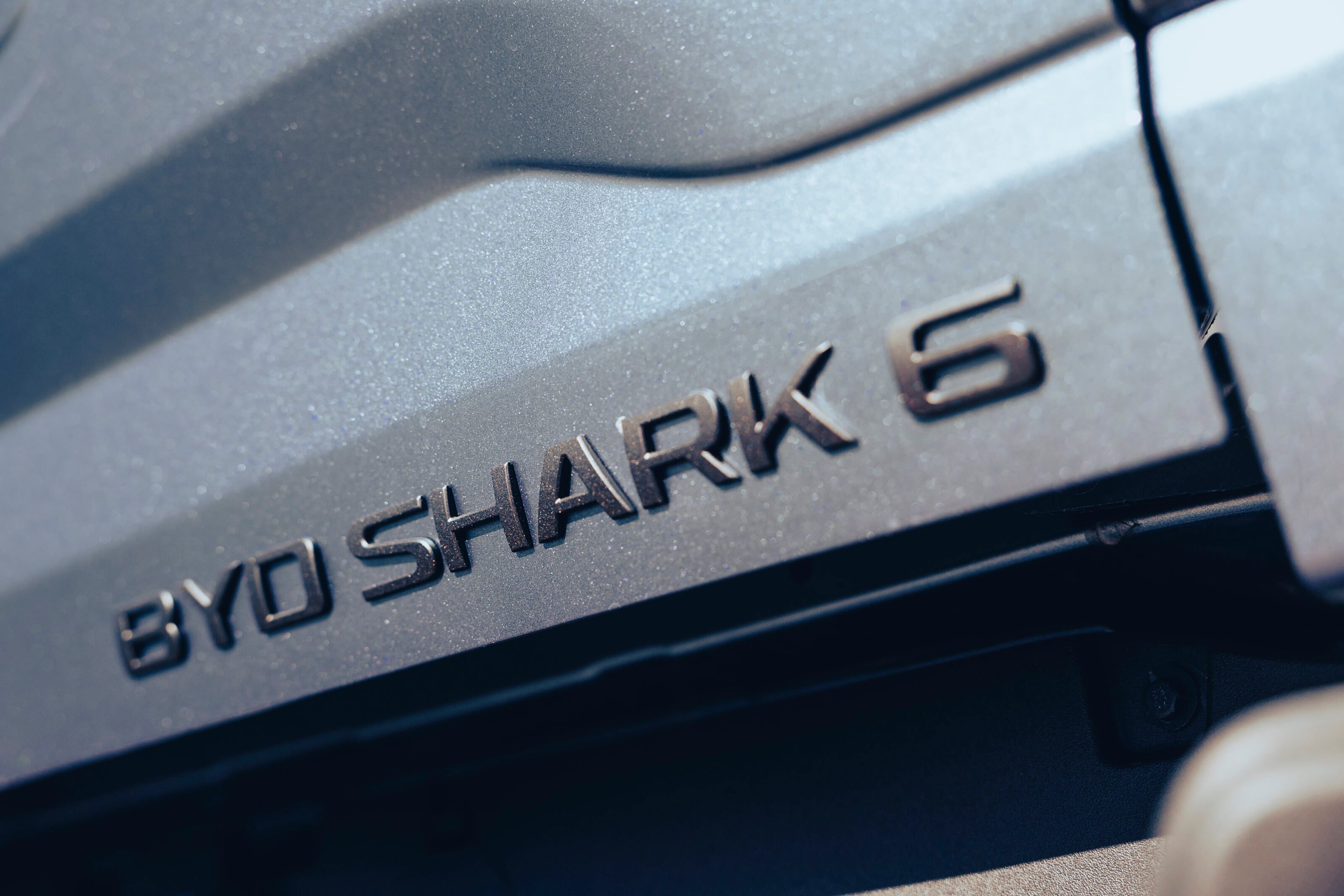
Eco Warrior
In most vehicles, pressing the Eco button will soften off the throttle response and it’ll upshift earlier. The Shark 6 is different. This drive mode is an environmental mode, and it means that the vehicle will default to battery power at virtually every opportunity, and also switch drive to just the front axle. It’s worth knowing this, because many will switch on the Shark’s Eco mode, thinking it will eke greater range out of the battery. Instead its first instinct is to use all of the battery’s available charge.
Specifications
| Model | BYD Shark 6 Premium |
|---|---|
| Engine | 1497cc, 4cyl, DOHC, 16v plug-in hybrid |
| Battery | 29.58kWh lithium-iron phosphate |
| Electric range | 100km |
| Electric motors | 170kW/310Nm (front) 150kW/340Nm (rear) |
| Max System Power | 321kW |
| Max System Torque | 650Nm |
| Transmission | Single-speed reduction gear |
| 0-100km/h | 5.6sec |
| Weight | 2710kg |
| L/W/H/WB mm | 5457/1971/1921/3260 |
| Fuel consumption | 2.0L/100km when battery between 25-100% charge, 7.9L/100km when battery level below 25% (claimed) |
| Price | $57,900 |
| On sale | Now |



